Dr. Wiener - Cracow
Claude Lanzmann was born in Paris to a Jewish family that immigrated to France from Eastern Europe. He attended the Lycée Blaise-Pascal in Clermont-Ferrand. His family went into hiding during World War II. He joined the French resistance at the age of 18 and fought in the Auvergne. Lanzmann opposed the French war in Algeria and signed a 1960 antiwar petition. From 1952 to 1959 he lived with Simone de Beauvoir. In 1963 he married French actress Judith Magre. Later, he married Angelika Schrobsdorff, a German-Jewish writer, and then Dominique Petithory in 1995. He is the father of Angélique Lanzmann, born in 1950, and Félix Lanzmann (1993-2017). Lanzmann's most renowned work, Shoah, is widely regarded as the seminal film on the subject of the Holocaust. He began interviewing survivors, historians, witnesses, and perpetrators in 1973 and finished editing the film in 1985. In 2009, Lanzmann published his memoirs under the title "Le lièvre de Patagonie" (The Patagonian Hare). He was chief editor of the journal "Les Temps Modernes," which was founded by Jean-Paul Sartre and Simone de Beauvoir, until his death on July 5, 2018. https://www.newyorker.com/culture/postscript/claude-lanzmann-changed-the-history-of-filmmaking-with-shoah Dr. Wiener leads Lanzmann around the Jewish quarter of Krakow and describes various buildings, sites, and his personal connection to the Holocaust. Wiener and Lanzmann talk with Israël Hertzl, a Polish veteran of the Soviet Army. FILM ID 3890 -- Wiener 1-2 Travelling Cracovie INT, Wiener seated in passenger seat of car. Driving tour of the city. Wiener describes streets, buildings, and areas of Kazimierz in Krakow, including Joseph Strasse, on which many of the Orthodox Jewish community lived before the war. He goes on to say that the quarter was the center of Jewish trade. Wiener and Lanzmann stop at the old synagogue and Wiener explains the history and current state of the building before pointing out the border of the Jewish quarter, buildings where Jews lived, and former locations of Jewish shops. He goes on to comment that he was born in the Jewish quarter, he lived on the streets throughout the war, and that his mother was in the Krakow Ghetto and his father in a camp. He also repeatedly comments on how much of the city has been reconstructed. Wiener points out the house that belonged to the Kassenellenbogens, a prominent Jewish family, a Jewish cemetery established after a cholera outbreak, and schools. Lanzmann and Wiener comment on the progression of Jewish and national culture. Wiener shows Lanzmann the old wall to the Jewish quarter. 01:20:00 Silent traveling shots of Krakow. Horse/cart. Ghetto buildings. Man pushing cart loaded with boxes. Tram. FILM ID 3880 -- Camera Rolls 3-10 Cimitiere Cracovie In Krakow, Wiener explains the history of the city's oldest Jewish cemetery and its current status as a memorial. A Polish gentleman named Israël Hertzl joins the conversation and tells Lanzmann and Wiener that he was a driver and German interpreter in the Soviet Army during the war and earned decorations from both Poland and the USSR. When prompted by Lanzmann, Hertzl says that he identifies first as Jewish and then as Polish and goes on to explain that his first wife, mother, and four brothers were all deported and killed. He elaborates on his Jewish identity and notes that he learned Yiddish and Hebrew, the few Jews remaining in Poland are very proud, and the efforts made by the Jewish community to build up the culture. Wiener's wife adds her thoughts to the conversation. Wiener, his wife, and Hertzl talk about their political views, with Wiener noting that he has been a member of the communist party for fifty-one years. They also discuss their views on religion and the Pope. Hertzl, born in Stanislaw, describes the town's geographic location, its history, and his life there from 1945-1957. He goes on to say that although he moved back to Krakow after his marriage in 1957, he and his wife visit Stanislaw (now part of Russia) every year. FILM ID 3881 -- Camera Rolls 11-14 Stele Cracovie Silent shots of the Holocaust memorial. Wiener and Lanzmann visit a Holocaust memorial for the Polish and Hungarian Jews who were killed. Lanzmann presses Wiener for more information about the inscription on the monument and they discuss its wording.
- EHRI
- Archief
- us-005578-irn1005030
- GHETTOS
- Film
- Krakow, Poland
Bij bronnen vindt u soms teksten met termen die we tegenwoordig niet meer zouden gebruiken, omdat ze als kwetsend of uitsluitend worden ervaren.Lees meer











